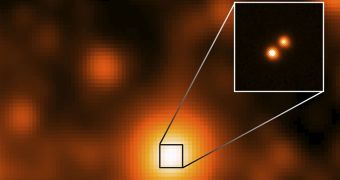Astronomers are still scouring the universe and, since it's such a big place, they're going to be at it for a while. But you'd at least hope that our own backyard should be lacking in surprises at this point. Of course, that's never the case.
A team of astronomers has discovered not one but two new stars very, very close to the solar system, only 6.5 light years away.
The new binary system is now the third closest to earth, after Alpha Centaury and Barnard's star. The system is dubbed WISE 1049-5319 and it's made up of two brown dwarfs, which is why it hasn't been spotted before.
Brown dwarfs are, as their name suggests, small and very dim. In fact, they're not even technically stars.
They're sometimes called failed stars since, while they formed via the same process as all the other stars, they didn't manage to gain enough mass to start fusing hydrogen together. Without the process that fuels all stars, brown dwarfs are more like big gas giants than stars.
Still the new pair is the closest set of stars discovered since 1916. The system was discovered using NASA's Wide-field Infrared Survey Explorer (WISE), hence the name. The system is now a prime target in the search for exoplanets, though the fact that it’s made up of dim brown dwarfs may be a hindrance.

 14 DAY TRIAL //
14 DAY TRIAL // 
